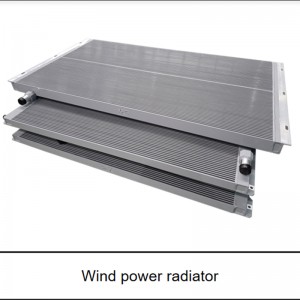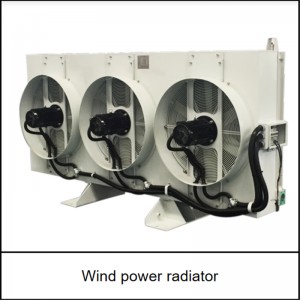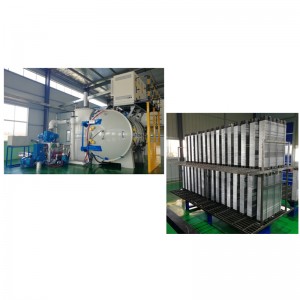Wind Power Generation And Welding Technology
In power plants, radiators are commonly used as part of the cooling system to dissipate heat generated by engines, generators, and turbines. These radiators are typically large heat exchangers designed to transfer thermal energy from the coolant circulating through the system to the surrounding air.
The radiator consists of a network of tubes or pipes that carry the hot coolant, such as water or a mixture of water and antifreeze, which absorbs heat from the engines or turbines. The coolant flows through these tubes while being exposed to a large surface area of metal fins or plates. The purpose of these fins is to increase the contact area between the coolant and the air, facilitating efficient heat transfer.
To enhance cooling, fans or blowers are often used to force air over the radiator’s fins, increasing airflow and improving heat dissipation. This airflow can be natural (convection) or forced (mechanical). In some cases, additional cooling mechanisms like sprays or mists may be employed to further reduce the temperature of the coolant.
Overall, the radiator in power plants serves the crucial function of removing excess heat generated during the operation of engines, generators, and turbines, ensuring their optimal performance and preventing overheating.
Wind power generation occupies an important share in the new energy sector. The heat exchanger plays an important role in the whole wind turbine. Heat exchangers provide cooling for generators, converters and gearboxes. Due to the particularity of installation environment and installation structure of wind power generation equipment, it is necessary to have strong requirements for long-term stable operation of heat exchanger.
Soradiator takes all possible risks into consideration from the beginning of design for products applied in the wind power field. For example, the corrosion of rainwater, the blockage of wind and sand, and so on. After decades of development, through various performance tests and customer feedback, continuous improvement of design and production process. So that the company’s products can meet the requirements of wind power customers.
Soradiator uses the best vacuum brazing furnace in the industry in the welding process. The vacuum brazing furnace is electromagnetic heated by diffusion pump. The brazing process can be controlled automatically or manually. At the same time has the function of program memory, alarm and so on. The ultimate vacuum degree of the vacuum furnace can reach 6.0*10-4Pa. Therefore, the brazing qualified rate and brazing strength of the product is greatly improved. In the process of entering the furnace, Soradiator adopts the industry’s original double bracket type furnace way to improve the temperature uniformity of products in the furnace. This way can increase the amount of furnace, while reducing energy consumption. The unique production process can ensure that the single pass rate of core brazing has been maintained at more than 98%.
Cooling Modules, produced by processing with high purity aluminum, a new material, have successfully satisfied market demands of high performance and less environmental impacts for regulatory compliance. We have demonstrated our R&D competences by diversifying the components depending on user environments and thus providing our Cooling Modules in an on-demand manner.








